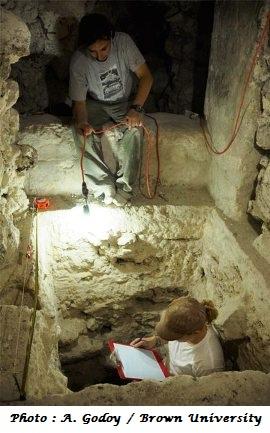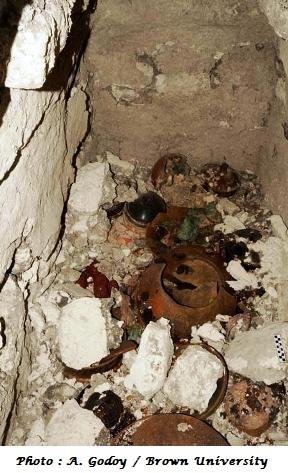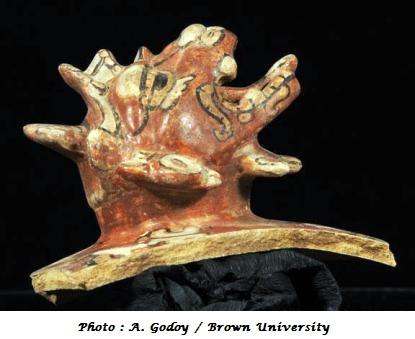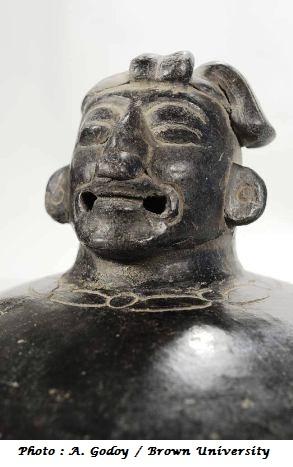GUATEMALA :
El Zotz. Brown University et les autorités guatémaltèques viennent d’annoncer la découverte d’une tombe royale maya. La tombe peinte et très bien conservée a été trouvée sous la pyramide El Diablo et renfermait sculptures, céramiques, textiles . Elle serait datée entre 350 et 400.

Voici l’histoire de sa découverte telle que vécue par S.Houston le responsable du chantier : “We knew a small temple had been built in front of a sprawling structure dedicated to the sun god, an emblem of Maya rulership. "When we sunk a pit into the small chamber of the temple,

we hit almost immediately a series of 'caches' -- blood-red bowls containing human fingers and teeth, all wrapped in some kind of organic substance that left an impression in the plaster.

We then dug through layer after layer of flat stones, alternating with mud, which probably is what kept the tomb so intact and airtight... I told him to remove the final erthen layer, and then, a flat stone. We'd been using a small stick to probe for cavities. And, on this try, the stick went in, and in, and in. After chipping away at the stone, I saw nothing but a small hole leading into darkness...We lowered a bare light bulb into the hole and suddenly I saw an explosion of color in all directions -- reds, greens, yellows... When we opened the tomb, I poked my head in and there was still, to my astonishment, a smell of putrification and a chill that went to my bones," Houston said. "The chamber had been so well sealed, for over 1600 years, that no air and little water had entered.”

La tombe mesure 3.6 m. x 1.2 m. pour une hauteur de 1.8 m. D’après les premières constatations il semblerait que la tombe soit celle d’un adulte mâle. Pas très loin il a été trouvé les ossements de six enfants qui peuvent avoir été sacrifiés à la mort du personnage principal. Pour les archéologues la situation de la tombe et la richesse artistique des objets trouvés sembleraient indiquer qu’il s’agisse d’un roi connu seulement par quelques inscriptions et fondateur d’une dynastie. Il aurait été enterré comme un danseur de rituel , portant tous les attributs de son rôle : clochettes de coquillages et claquettes réalisées avec des canines de chien. Son corps reposait sur une bière dressée aujourd’hui détruite. Une de ses mains tenait un couteau. Cette lame semble avoir été utilisée pour couper et gratter un matériel dur comme des os, sa surface semble être recouverte d’un résidu organique de couleur rouge qui pourrait être du sang. Il pourrait donc s’agir d’un couteau de sacrifice.

La découverte est toute récente et les études ne font que commencer.